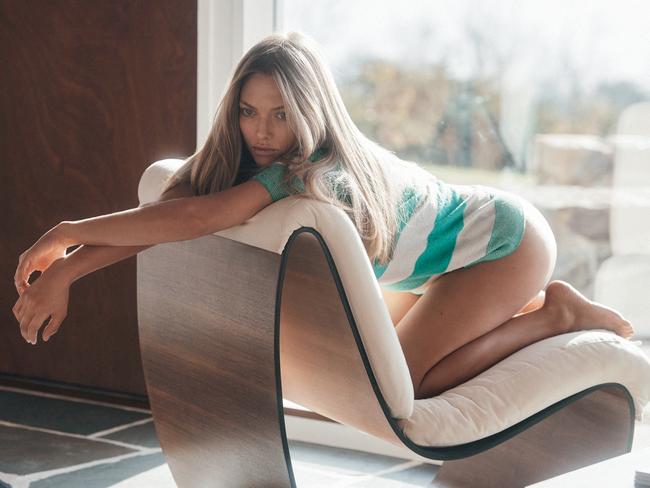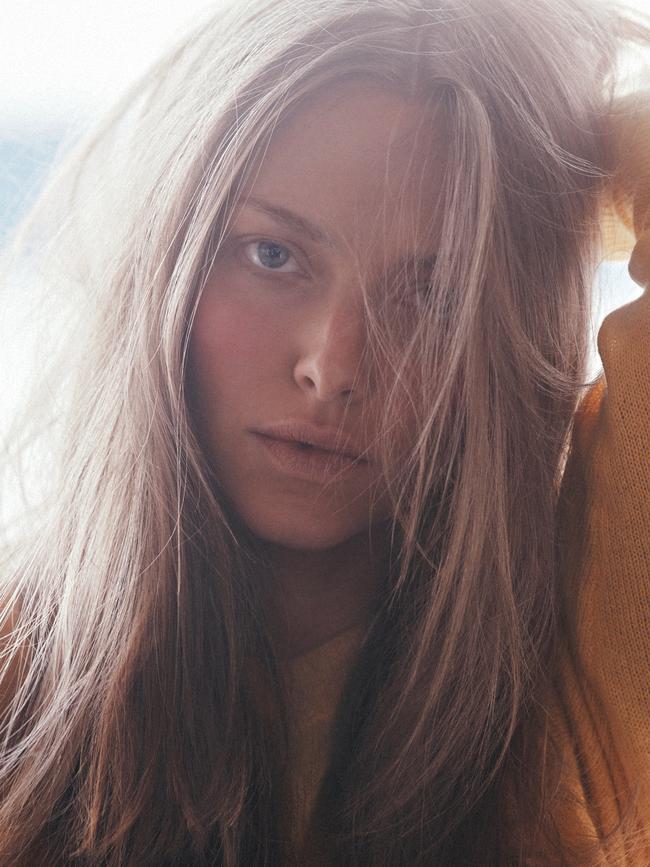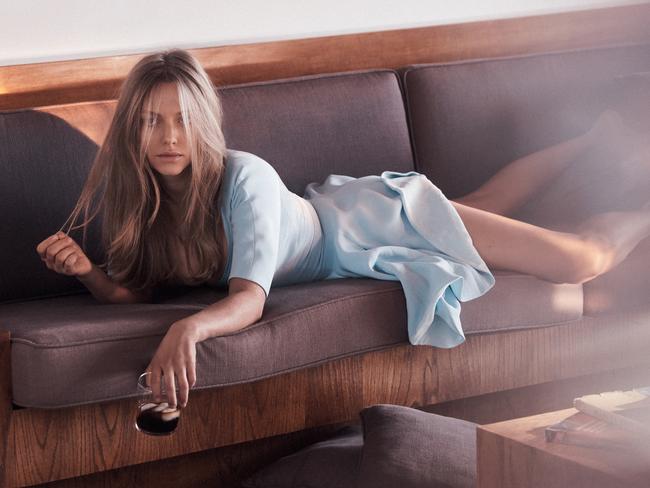Oscar buzz and a new baby: Amanda Seyfried is in her element
After giving the performance of her career in the role of a lifetime, the actor has never been more ready for her next chapter.

This is what annoys Amanda Seyfried, like really annoys her: when people buy animals that they can’t be bothered to take care of.
The actress sees it a lot, and as a lifelong animal lover who fostered her beloved dog Finn 11 years ago, she gets upset whenever she spies a Facebook post – and there are many of these “fucking Facebook things”, she fumes – like the one she saw advertising goats for sale. She gets miserable, thinking of these creatures without a home. And then she gets mad, ruminating on the kind of person who would buy a pet without also accepting the responsibility to care for it. “Why do you get goats if you have to get rid of them?” she demands. “I’m just really frustrated. I want to take them, but I’m at capacity with goats – because of the dynamics, you know?” The thing is, the 35-year-old explains, animal dynamics are crucial. You have to get the balance of temperaments right, and with 23 animals currently living on her farm in the Catskills in upstate New York – along with her husband, fellow actor Thomas Sadoski and their two young children – there is presently no room at the inn. The inn she’s in right now: Seyfried is speaking to Vogueover Zoom from her barn, make-up free and hair scraped back from her face. She rattles off her menagerie, like a deranged Christmas carol – many calling chickens, five wilful goats, who like to put up a fight in the morning (“it’s the precipitation,” Seyfried notes, sagely), one sweet turtle, and a shaggy horse grazing in a field.
“I need animals around, because the sense of calm and groundedness and feeling rooted – you can’t deny it when you’re having to feed big fuzzy faces every morning,” she says. “Plus,” she adds, “you don’t focus so much on human dynamics if you have to also worry about animal dynamics.”

Seyfried has owned her farm for seven years. She bought it against the advice of her business manager because she loved the bones of it, from the tiles on the roof to the dirt in the ground. At first, she split her time between the Catskills and Los Angeles, with sojourns overseas in lovely, sunny destinations like Croatia – to make Mamma Mia! Here We Go Again– in between. But no longer. A pandemic, as well as the clear-mindedness that comes with getting older, and a little wiser, has shored up her decision to stay on the farm permanently. “I’m not into that. Having two kids and a dog now, the travelling aspect is like, ‘No thanks.’” And also – she looks down the barrel of the Zoom for a conspiratorial second – “I don’t like LA that much... This feels like home, whereas LA never did.”
The benefits of her home are myriad and self-evident. She tilts her laptop camera for a second, showing the view through the darkening window, where a light dusting of snow rests on the grass like icing sugar. It’s peaceful here, far enough away from any city to feel solitary and restful. A world unto itself. Most nights, when the kids are asleep, Seyfried and Sadoski will sit down and watch TV – “No matter what,” she says, “the only time we didn’t was when we were on vacation.” (The Great British Bake Off and Nurse Jackieare recent projects.) Seyfried might crochet a thing or two: she was putting in about two hours a day over lockdown, making tiny little things for her tiny little baby boy, born in September. She loves this routine of knitting and watching – there’s not a lot to do of an evening in the Catskills. It’s a blessing. “I have to say,” she says, smiling. “the pandemic stopped things, but my life was already pretty slow.”
This is a true story: when Seyfried was growing up in Allentown, Pennsylvania, her nickname was “Demanda”. She was a gutsy and forthright second child who, like many actors, was a performer from the cradle. By 11, she was modelling and being paid for her work. “I grew up with very little,” Seyfried recalls. So when cheques started coming in, even though she never actually saw that money – it all went towards bus tickets that would take her to the next job, and the next, and the one after that – “I felt like a millionaire.”

At 15, she booked her first role as an actor. “It was exactly 20 years [ago],” Seyfried notes, and since then she’s worked practically nonstop, making more than 40 films and TV shows. Her prolific output includes genre-defining hits (Mean Girls, her very first film), box-office smashes (the Mamma Mias, each of them an incandescent delight), awards-season darlings (Les Misérables) and cult classics, such as the latest Twin Peaks. She has worked with some of the industry’s most respected filmmakers. Meryl Streep has played her mother; Hugh Jackman (and Pierce Brosnan, and Colin Firth, and Stellan Skarsgård) her father. As an actress, she is uniquely gifted with her endlessly expressive eyes, a radiant singing voice and impeccable comedic timing, which she often deploys in ways that surprise you or catch you off guard.
Still, despite all this, when she heard that David Fincher – the Oscar-nominated director of Gone Girl– wanted to Zoom with her about a role in his new movie, she teared up. This was 2019: Seyfried was 33, and putting in long nights on a film set while raising a toddler. She was at a crossroads in her career, ready to take on something really meaty. And also, because this was 2019, she had never heard of Zoom before. “I thought maybe it was a special, secret video app,” she recalls. “Isn’t that funny?” She spoke with Fincher, who began to regale her with details of his special new project called Mank, a biopic of the beleaguered Citizen Kane screenwriter Herman J Mankiewicz, written by Fincher’s late father. The director wanted Seyfried to play Marion Davies, a bold Brooklyn broad who was a real-life star in her heyday but, at the time of the film’s events, was best known as the mistress of William Randolph Hearst – bombastic publishing tycoon and inspiration for Citizen Kane.
Seyfried listened to Fincher tell her how much he wanted her in his film, a passion project some 30 years in the making, and she froze. “I was so scared, because I look up to him a lot,” she says. “I wanted to have an intelligent conversation with this extremely intelligent man and I sometimes don’t trust I can meet anybody halfway.” Seyfried has always had anxiety – when she starred on Broadway in The Way We Get By, the play that brought her and her husband together, she had a panic attack on stage every week. She sees a therapist regularly and takes antidepressants, but Seyfried’s anxiety often manifests at work. “I start getting insecure,” she recalls. “Like, I am silent. I’m not silent to be silent, I’m silent because I haven’t had a chance to speak yet, and think ‘will he think I’m an idiot?’” But if you ask Fincher? “He’ll be like: ‘I just did a word vomit for 45 minutes,’” Seyfried says, laughing. “That wasn’t my experience,” she quickly adds. “I love it when he talks.”
As a filmmaker, Fincher is famous for his perfectionist streak and his eagerness to shoot ream after ream of celluloid until everything is immaculate. Some actors crumble under Fincher’s exacting gaze; Seyfried rose to the challenge. Her scenes in Mankare integral ones, including her entrance, when Marion meets the gin-soaked screenwriter for the first time, quite literally tied to a stake. (Subtlety, thy name is not Fincher.) The scene was shot over an entire exhausting week in 200 takes, with an additional four days tacked on just before lockdown, by which point Seyfried was pregnant.
“I’ve always known I’m capable of a lot of things, but I guess I never really got this type of challenge before,” she enthuses. It was all about trust, and with every take, Seyfried chipped away until she struck gold. “You just keep exploring that moment over and over again until it becomes something else, and then it becomes something else,” she reflects.
That something else is Seyfried’s best performance: her Marion comes off easy breezy, but there’s a steeliness just below the manicured surface. Seyfried is currently the frontrunner to not only get a Best Supporting Actress Oscar nomination – but to win. “I’m so proud,” she says. “I have really crazy pinch-me moments, because I have been working for 20 years, and I’ve changed a lot and grown a lot, and grown a lot of confidence. I’ve got my feet firmly planted on the ground in terms of what I want in my career, what I want day-to-day, and what I want in my life. So when I’m walking onto David Fincher’s set in the place I’m at right now in my life, it was the perfect timing. I don’t know if I could have played this role the way David needed me to play it, the way I needed to play it, five or 10 years ago.”

Looking back on her two decades in Hollywood, Seyfried says that the industry “feels more inclusive” now. “I mean, obviously there’s a way to go in terms of equity, in terms of the pay gap,” she quickly adds. Seyfried has firsthand experience of that. Once, she found out only after the fact that she had received just 10 per cent of a male co-star’s salary for the same project. “But I thought I was getting paid a lot,” she notes ruefully. She has nothing but the deepest respect for the women who kickstarted the #MeToo movement, even though she “was never in a situation that dire, that dark – thankfully”. But she can empathise, having felt “completely uncomfortable and taken advantage of” in sex scenes or nudity that felt gratuitous. “I’ve been victim to that because I was young,” she says, “and I didn’t want to say no, because I didn’t want to get fired.” Hollywood does feel safer these days, she believes, and there’s a “firewall” of people protecting the most vulnerable. But the industry isn’t perfect. “You can’t pick out all the bad weeds,” she notes. “There are still people who will be in power until they’re not around anymore.”
But Hollywood has changed, and Seyfried has too. In addition to being a movie star, she is a global ambassador for Lancôme and in 2018 joined the board of child refugee charity Inara. In the past five years she also met Sadoski and the couple is now married with two children. Her second pregnancy, which took place almost entirely over lockdown, felt like a turning point for her in an otherwise distressing year, one in which Seyfried tried to figure out her place in a growing social movement. “The question for me was ‘how much of an impact’, not, ‘do I want to make an impact?’” she reflects. “I feel like the responsibility of everybody changed: as a mother, as a citizen – a US citizen especially, as just a good human being.” Seyfried channelled her 4.8 million-strong Instagram following to share vital stay-at-home messaging during the pandemic and amplify the work of organisations during the election and Black Lives Matter protests. “The other choice I had to make every fucking day was what’s the silver lining?” Seyfried adds. “Like, alright, I’m at my farm. I’m safe, my family’s safe. I’m pregnant, and I’m going to have this baby in the pandemic and we’re all going to be together. Tommy’s not off working, I’ve got my mum here. Got these animals to feed.”
Her pregnancy was “quiet” – that was one silver lining. “If we’d been under ‘normal circumstances’, I wouldn’t have been able to have that much time with my family together,” she reflects. In the beforetimes, she would have spent most of her immediate postpartum weeks jetting around the world on a Mankpublicity tour – no virtual premieres from the same comfortable chair she’s sitting in right now. “And I can’t tell you how anxious, how cold and sweaty my body gets before live television,” she admits. “There’s none of that. I’m just sitting in my barn next to the turtle.”

Having two kids is “less panic,” Seyfried muses. “We’re so confident... we don’t overthink.” Sadoski is “an amazing father,” Seyfried says, revealing he also does the night shift, which still floors her. “He’s so enthusiastic about it,” she marvels. “In the middle of the night – there’s no way I would want to get up and feed him! No way... And I think he’s really trusting himself, and I’m really trusting myself, too.” A second child herself, Seyfried knows that it’s a different kind of motherhood when you’ve been through the wall once before. “My in-laws are like: ‘Why don’t we get pictures every day?’” she says, laughing. “I mean, we have a lot of pictures of him – but it’s not the first thing I do. I just marvel at his human beauty.”
It’s because of this little boy that she’s in no rush to get back to work. She’s been on the job solidly for two decades and “for the first time in my life,” she says – notwithstanding the projects that are always bubbling away in development – “I absolutely can say there’s nothing.” Sure, she’d love to work with more filmmakers like Fincher: Pedro Almodóvar, Baz Luhrmann, Martin Scorsese are on her wishlist. And every couple of months Seyfried has her agent send an email to the producers of the movie adaptation of the Broadway musical Wicked, just to triple confirm that they’ve registered her interest. “I want to do Wicked, I have said that a million times,” Seyfried says with a laugh. But outside of long-held musical ambitions, she is trying to be careful. “I don’t want to do anything that’s going to pull me away. I’m not ready yet,” she says. “I have the luxury of being able to stay home and I’m going to capitalise on it, because I don’t think anything is pulling me back yet. I know I’ll work again, so that’s good enough.”

The other night, she had a nightmare about Mank. It’s a revealing one: her dream was that all the praise for her performance – the Oscar buzz so buzzy it’s a swarm – was false. “I realised I was afraid that people would just tie me into the Fincher of it all,” Seyfried admits. Or actually, her real fear was this: “That I would do something I wasn’t proud of, and that people would talk about it anyway.”
Then she woke up. Seyfried has been working for more than two thirds of her life and damn it, she knows she’s made something that’s going to stick. “I worked hard, it’s an incredible movie,” she enthuses. “I love how it’s directed, I love how it turned out. I’m super happy with my performance... I could talk about it all day.” It is great, and she is, and life on her farm with her family and her 23 animals and all of their needs and dynamics is great. Really wonderful, actually, a life that is deep and satisfying and full. A “beautiful grind,” she sums up. “And don’t get me wrong – I love my grind.”
Mank is now streaming on Netflix.
Vogue’s February issue is on stands February 8.

